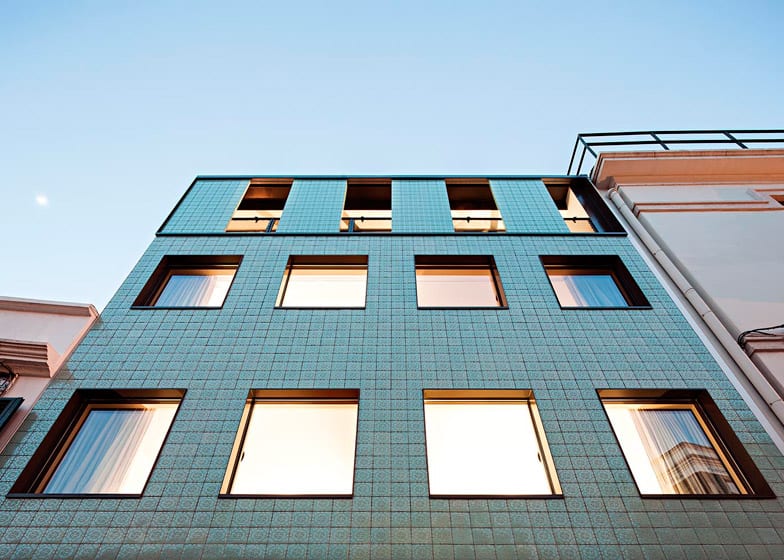Camarim Arquitectos is a firm from Lisbon, Portugal. The firm was founded in 2007 with “the ambition of creating spatial solutions that make life easier and rewarding.” They focus on creating flexible, energy-efficient buildings in spaces that produce an experience that triggers visual, acoustic, aromatic and tactile senses.

Between 2007 and 2013 the firm worked on a project titled Casa no Príncipe Real in Lisbon, Portugal. The building is a 5-storey urban family dwelling which utilizes a tile facade in an abstract pattern. The architects state of the project:
The exiguity of the plot has led us to a scheme where each floor has a different function and layout and all floors connect through a vertical atrium of variable geometry, providing a naturally-lit cadenced, progressive route. In addition to its spatial qualities, the atrium works as a thermal chimney for passive cooling during spring and summer and allows air renewal throughout the year.
The building’s skin is a contemporary approach to the tiles covering the former building, which was in advanced state of decay. We defined a set of abstract rules to transform the original tile’s motif in an abstract pattern, embodied in 3 distinct media: a flat-tile base, a bas-relief-tile body and a perforated-steel, light-permeable, entablature.

Hard as it would be to plan a typical construction site in such a small plot, we opted for a light steel construction system – LSF – which has an excellent thermal and acoustic performance. It is the first building in Lisbon made with this system.
Any thoughts about this post? Share yours in the comment box below.

Casa no Príncipe Real by Camarim Arquitectos. Photographs by Nelson Garrido.

Add your valued opinion to this post.